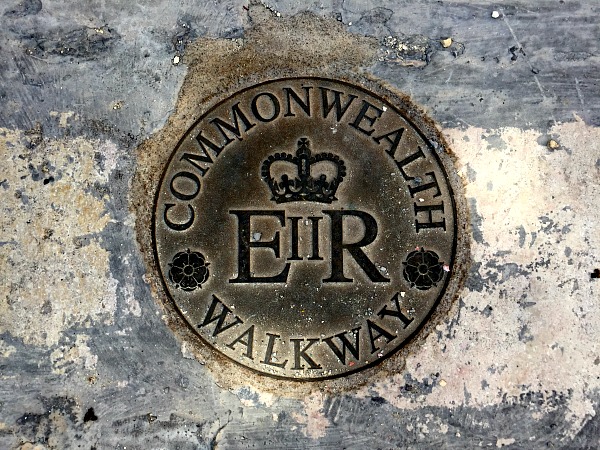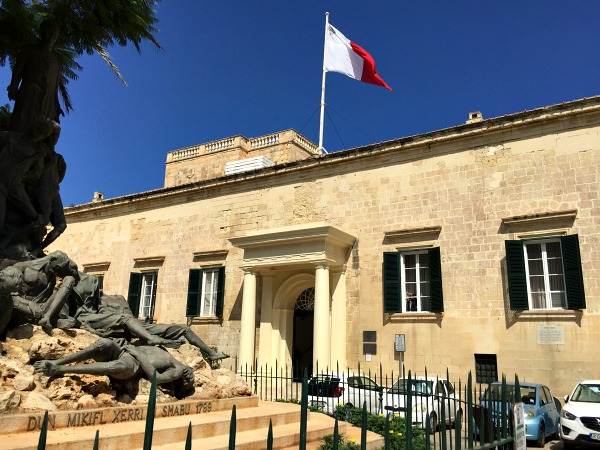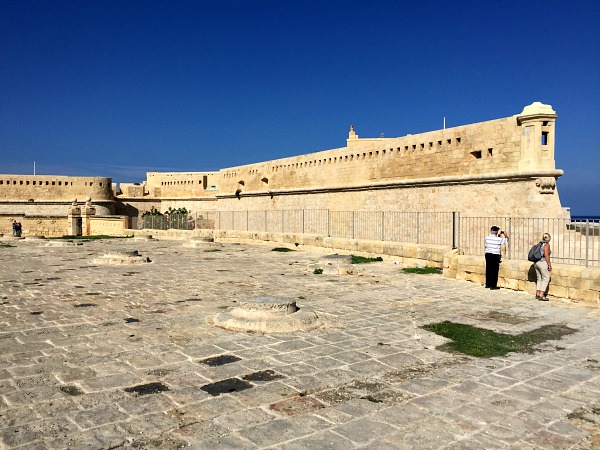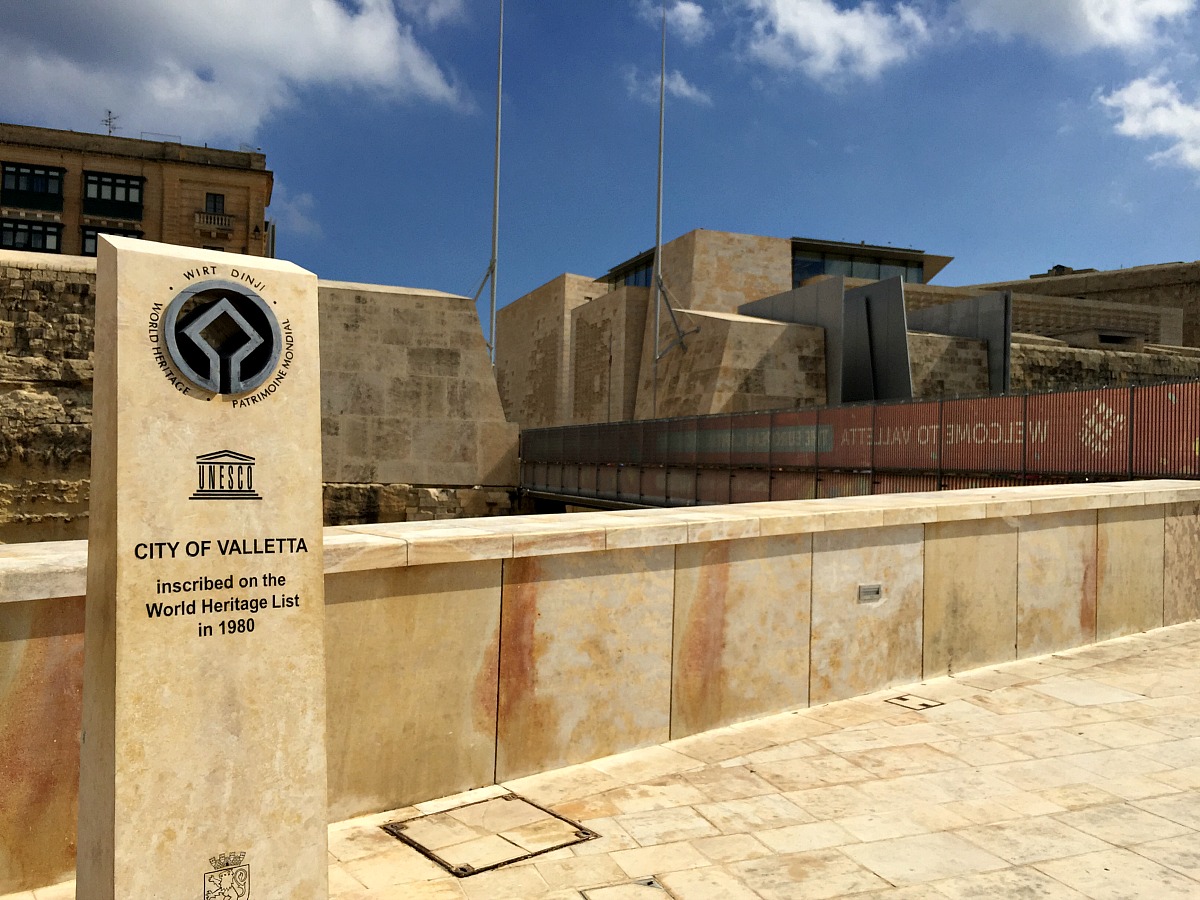Explore Valletta as Queen Elizabeth II would! (Part 1)
Explore Malta’s capital city in style! Follow the Valletta Commonwealth Walkway route signs, which are 20 bronze markers bearing The Queen’s cypher – EIIR – that will take you around Valletta’s great points of interest.
Before I start talking about the actual walkway and each stop, let me quickly mention the special relationship the Queen has with this little island. It is a well known fact that Queen Elisabeth II spent many months in Malta still as a princess Elisabeth. It was when The Duke of Edinburgh was stationed in Malta after the war as a naval officer.
Queen Elisabeth II said on many occasions that Malta is the only place in the Commonwealth, other than Great Britain, that she can consider as home. The house she used to live in, Villa Guardamangia, is still standing, however it is in a very poor condition. The Queen has visited many times since. Last time the Queen was in Malta she inaugurated The Valletta Commonwealth Walkway.

The Valletta Commonwealth Walkway was inaugurated by HM Queen Elizabeth II and Minister for Tourism Edward Zammit Lewis on the 28th November 2015 to mark the beginning of a walk linking significant sites of heritage and culture in the city. The Malta / Valletta Commonwealth Walkway was founded to celebrate the important Commonwealth Heads of Government meeting held in Malta in 2015.
Here are the 20 points of interest that you will see during your Valletta Commonwealth Walkway:
1. City Gate
Welcome to Valletta. City Gate is the main entrance to Malta’s capital. It consists of two modern interpretations of large demi-bastions, which stones were quarried in Gozo. The gate was designed by Renzo Piano, the architect of the New Parliament Building. Once you enter Valletta through the City Gate you will end up at Freedom Square at the top of Republic Street. Behind the city walls, there are wide and shallow steps. The ones on the left hand side lead directly to the Hastings Gardens which is also one of the stops.

2. The New Parliament Building
As already mentioned the New Parliement Building was designed by Renzo Piano, who is also the architect of the Shard in London. It was officially inaugurated on the 4th May 2015 and since then it has served as the site for Parliamentary discussions. The building consists of two huge blocks of stone resting on slender columns. The Parliament is based in the northern block and the southern block houses the offices of the Members of Parliament, the Prime Minister and the Leather of the Opposition. Also notice the the finishing of the facade. It was sculptured in a way as if it was eroded by the elements.

3. Hastings Gardens
Hastings Gardens is a public garden in Valletta and it’s located on top of St. John’s and St. Michael’s Bastions. When you enter Malta’s capital through the City Gate, take the first left, walk up the stairs and you will get directly to the garden. There are number of gates you can access it from. Hastings Gardens were built by the architect Adriano DeVina and named after Francis Edward Rawdon-Hastings. He was a former governor of India, who following his resignation ended up serving as Governor and Commander-in-Chief of Malta from 1824 to 1826. Find out more by reading my recent blog.

4. Fortifications Interpretation Centre – Fortress Builders
This museum focuses on the fortress structure as a protector of the citizens it houses. And how the fortifications were developed and modified over the centuries. The museum is free of charge. It spreads over three floors and offers plenty to do and see. From well-made artifacts, video installations, touch screens, info panel, games for children or 3D puzzles. And let’s not forget the roof! It offers a breath-taking views of Fort Manoel and Fort Tigne. Here is where to find the Fortress Museum.

5. Saint Paul’s Anglican Pro-Cathedral
The construction of this Anglican Pro-Cathedral was initiated and paid for by Queen Adelaide, the widow of William IV. The foundation stone was laid on 20th March 1839. The Cathedral was dedicated to Saint Paul the Apostle. St Paul’s Pro Cathedral is easily noticeable from distance thanks to its tall spire. It is also worth mentioning and the Cathedral’s altar survived serious bombing during WWII despite the fact that the spine served as a useful landmark for enemy bombers! Here is where to find it.

6. Manoel Theatre
Manoel Theatre is the oldest theatre in the Commonwealth! It was built in 1731 and opened its doors in 1732. You don’t have to attend a play to be able to see the theatre, there are organised tours every day! Something I’ve been planning for a while but haven’t managed to do just yet. The theatre is named after its founder Antonio Manoel de Vilhena, the 66th Prince (Prince of the Church, the term is today used nearly exclusively for Catholic cardinals) and Grand Master of the Order of the Knights of Malta.
Manoel Theatre through out the years also served as a dance hall, a cinema and in World War II a refuge from bombing raids. The theatre has a horseshoe shaped auditorium with an oval ceiling and gilded boxes in which Queen Adelaine and even Queen Elizabeth II watched a production!

7. Saint John’s Ambulance Headquarters & The Auberge d’Aragon
The door below leads to Saint John’s Ambulance Headquarters, located in Pjazza Independenza, which is a voluntary organisation. It consists of three branches: The Training Assossication, First Aid & Nursing and The Rescuie Corps. You can find out more about this organisation on this link.

Part of this 7th stop is also Auberge d’Aragon. This is one of seven auberges built in Valletta and it was erected in 1571. It was originally occupied by the Knights of Saint John from Aragon, whose job was to defend Saint Andrew’s Bastion. In 1798 it was taken over by the French and later by the British in 1800. It was also an office of the Prime Minister from 1924 until 1971 and the 1964 Independence documents were drafted here. Since 2013 it houses the Ministry for European Affairs and Implementation of the Electoral Manifesto.

8. Fort Saint Elmo
Fort Saint Elmo was built in 1552 as a star fort, guarding the entrance to the Grand Harbour. During the Great Siege in 1565 it withstood the Turkish attacks for 28 days, however it eventually fell on 23rd June to continued bombardment by the Turks. The damaged fort was rebuilt the following year. During the Second World War it was attacked by the Italians and Germans and it was severely damaged during the Italian seaborne attack of 26th July 1941.
The fort also houses the National War Museum since 1975. The museum documents the story of Malta’s conflicts from the Bronze Age to the Great Siege as well as WWII. Let’s not forget that the George Cross that was awarded to the island of Malta by King George VI is displayed here.

9. The Malta Siege Bell War Memorial
On the furthermost point of Valletta within Grand Harbour you can find the Malta Siege Bell War Memorial. The monument was design by Michael Sandle in the form of an elliptical neo-classical temple supported by 10 square-faced columns. The Bell Tower contains the Santa Maria Bell, the largest bell on the Maltese islands, which was cast on February 10, 1992 by the world’s largest bellfounders John Taylor & Co Founders of Loughborough England. It was unveiled by Her Majesty Queen Elizabeth II in May 1992 on the 50th anniversary of the Siege of Malta to commemorate all those who died between 1940 and 1943.
Let’s not forget the other part of the memorial, which consists of a bronze figure of a recumbent corpse (6 metres long), wrapped in a shroud, symbolizing the 7,000 people who lost their lives during the Second World War. You can read more about this monument here or here.

10. The Lower Barrakka Gardens
Arguably the best place to admire the Malta Siege Bell War Memorial is from the Lower Barrakka Gardens. The gardens offer stunning views of this monument as well as the Grand Harbour and the Three Cities. The garden houses numerous commemorative plaques and being from the Czech Republic I’m going to mention the one dedicated to Prague Spring, celebrating the diplomatic relations between Malta and the Czech Republic unveiled on 10th July 2008. However the main attraction of the Lower Barrakka Garden would be a monument in the form of an ancient Greek Doric temple dedicated to the memory of Rear-Admiral Sir Alexander Ball who also served as a governor of Malta.

This is the end of the first part of Valletta Commonwealth Walkway photo blog! You can expect a follow up blog dedicated to the remaining 10 stops of this walk in the upcoming week. Hope you are enjoying this alternative way to explore Malta’s capital and will try this route next time you are in Valletta.



